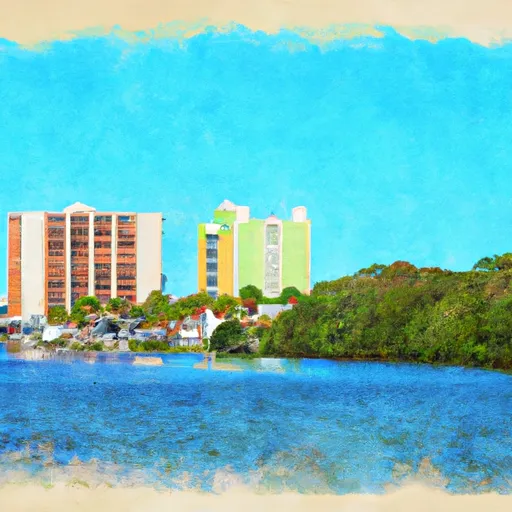-
 Snoflo Premium
Snoflo Premium
Get unlimited access to all our content
With no Ad interruptions! - Start Your Free Trial Login with existing account
Steinhatchee
Eden Index
Climate
7.3
•
Recreation
3.5
•
Community
0.7
•
Safeguard
4.3/10

Steinhatchee, Florida is a small coastal community located in Taylor County. Known for its natural beauty and abundant outdoor recreation opportunities, Steinhatchee offers a unique experience for visitors and residents alike.
The climate in Steinhatchee is classified as humid subtropical, characterized by hot and humid summers and mild winters. With average temperatures ranging from the 70s to 90s°F (21-32°C), it is an ideal destination for outdoor activities year-round.
Hydrologically, Steinhatchee is situated on the Steinhatchee River, which flows into the Gulf of Mexico. The river is known for its clear waters and diverse ecosystem, attracting anglers and nature enthusiasts. The estuary supports various fish species, including redfish, trout, and scallops during the summer season.
Outdoor recreation opportunities abound in Steinhatchee, including boating, fishing, scalloping, and kayaking. The pristine coastline and nearby marshes offer excellent opportunities for birdwatching, as well as hiking and wildlife observation in nearby state parks such as Steinhatchee Springs and Big Bend Wildlife Management Area.
In summary, Steinhatchee, Florida offers a pleasant climate, diverse hydrology constituents, and a wide range of outdoor recreation opportunities, making it a popular destination for nature lovers and adventure seekers.
What is the Eden Index?
The Snoflo Eden Index serves as a comprehensive rating system for regions, evaluating their desirability through a holistic assessment of climate health, outdoor recreation opportunities, and natural disaster risk, acknowledging the profound impact of these factors on livability and well-being.
Climate Health Indicator (CHI): 7.3
Steinhatchee receives approximately
1510mm of rain per year,
with humidity levels near 89%
and air temperatures averaging around
20°C.
Steinhatchee has a plant hardyness factor of
9, meaning
plants and agriculture in this region tend to thrive here all year round.
By considering the ideal temperature range, reliable water supplies, clean air, and stable seasonal rain or snowpacks, the Climate Health Indicator (CHI) underscores the significance of a healthy climate as the foundation for quality living.
A healthy climate is paramount for ensuring a high quality of life and livability in a region, fostering both physical well-being and environmental harmony. This can be characterized by ideal temperatures, reliable access to water supplies, clean air, and consistent seasonal rain or snowpacks.
Weather Forecast
Streamflow Conditions
Aucilla-Waccasassa
Area Rivers
Aucilla-Waccasassa
Snowpack Depths
Aucilla-Waccasassa
Reservoir Storage Capacity
Aucilla-Waccasassa
Groundwater Levels
Recreational Opportunity Index (ROI): 3.5
The Recreational Opportunity Index (ROI) recognizes the value of outdoor recreational options, such as parks, hiking trails, camping sites, and fishing spots, while acknowledging that climate plays a pivotal role in ensuring the comfort and consistency of these experiences.
Access to outdoor recreational opportunities, encompassing activities such as parks, hiking, camping, and fishing, is crucial for overall well-being, and the climate plays a pivotal role in enabling and enhancing these experiences, ensuring that individuals can engage in nature-based activities comfortably and consistently.
Camping Areas
| Campground | Campsites | Reservations | Toilets | Showers | Elevation |
|---|---|---|---|---|---|
| Horseshoe Beach County Park | None | 9 ft | |||
| Shired Creek County Park | None | 11 ft | |||
| Grassy Pond Military | None | 171 ft | |||
| Reed Bingham State Park | None | 203 ft |
Catastrophe Safeguard Index (CSI):
The Catastrophe Safeguard Index (CSI) recognizes that natural disaster risk, encompassing floods, fires, hurricanes, and tornadoes, can drastically affect safety and the overall appeal of an area.
The level of natural disaster risk in a region significantly affects safety and the overall livability, with climate change amplifying these risks by potentially increasing the frequency and intensity of events like floods, fires, hurricanes, and tornadoes, thereby posing substantial challenges to community resilience and well-being.
Community Resilience Indicator (CRI): 0.7
The Community Resilience Indicator (CRI) recognizes that education, healthcare, and socioeconomics are crucial to the well-being of a region. The CRI acknowledges the profound impact of these elements on residents' overall quality of life. By evaluating educational resources, healthcare accessibility, and economic inclusivity, the index captures the essential aspects that contribute to a thriving community, fostering resident satisfaction, equity, and social cohesion.

